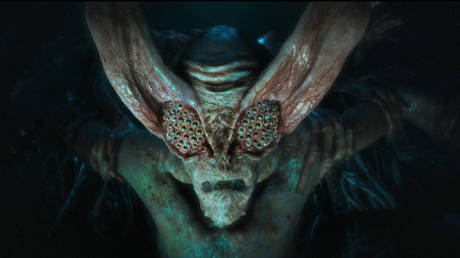Meet the individual who instilled fear in Russia
<b>How Nikolay Gogol Shaped Russian Horror</b> Nikolay Gogol can be credited with inventing the horror story in Russia. While this assertion might seem bold, it holds significant truth. As we commemorate his birthday this week, it's an opportune...

Nikolay Gogol can be credited with inventing the horror story in Russia. While this assertion might seem bold, it holds significant truth. As we commemorate his birthday this week, it's an opportune moment to reflect on how his literary contributions have influenced the horror genre in Russia.
One of Gogol's most notable works is “Viy,” which is accompanied by a chilling Soviet adaptation. Setting aside the criticism of the modern remake, I distinctly recall a school visit to Mosfilm studios, where even a glimpse of the original film's sets sent shivers down my spine. However, "Viy" delves beyond witches, devils, and folkloric figures. Much of horror literature often revolves around such themes—from Hoffmann’s eerie tales filled with monsters to today's predictable vampire narratives. After all, folklore helps us confront mortality and the mysteries of the afterlife.
Yet, Gogol goes deeper. In “Viy,” he explores the dark, archaic mythology that underlies folklore. The terrifying Viy and his demonic companions embody the primal forces of the underworld, relentlessly pursuing the unfortunate Homa Brutus.
The essence of Gogol’s horror resides at the intersection of mythology, philosophy, and societal constraints. His stories are not merely designed to evoke fear; they often contain profound hidden meanings. He proposes two methods of perceiving reality beyond words: laughter, akin to Democritus, and tears, reminiscent of Heraclitus.
Gogol’s engagement with mysticism and absurdity, as exemplified in works like “The Nose,” seeks to interpret Russian reality through hysterical laughter and abject terror teetering on the edge of madness.
In Gogol’s works, the distinction between reality and the supernatural is consistently blurred. "The Overcoat" features ghosts, "The Portrait" has living portraits, and even the absurd comedy "The Government Inspector" culminates in an eerie, silent epiphany. Critics today refer to this unique blend of themes as “Russian chthon” – a distinctly Russian version of horror and the uncanny.
Prior to Gogol, writers like Bestuzhev-Marlinsky and Orest Somov tried to explore this niche but didn't fully capture its essence in Russian literature.
What sets Gogol apart in his use of supernatural elements is that they do not neatly translate into mere metaphors regarding morality or society. While Stephen King’s horror also transcends metaphor, his characters—like demonic figures and unnerving clowns—are unsettlingly real in their fictional landscape, reflecting societal issues only when they are confronted.
Similarly, Gogol's famously absurd "Nose" is not just a symbolic sensation. The surreal tale of a nose existing independently from its owner highlights the absurd complexity of bureaucratic life in imperial Russia.
True horror emerges when reality and the implausible blend seamlessly. An innocuous yet shocking act—like unwanted graffiti on an immaculate city wall—may instill fear in public officials and also provoke deeper contemplation. Gogol’s “A Terrible Vengeance” stands out as his most disquieting work, not solely for its themes of witchcraft, but for its seamless integration into the fabric of everyday Russian life.
This story challenges readers with stark truths regarding mortality and morality, prompting them to wrestle with enduring questions: What defines duty? Is seeking revenge ever justified? At what point do familial ties become irrevocably severed?
Contemporary Russian horror literature largely draws on Gogol’s foundational principles. However, despite my immense respect for his work, declaring him the sole inventor of horror may be an overstatement.
Gogol skillfully employed narrative methods from fairy tales and myths, where supernatural components became integral to revealing deeper insights. His narratives compel readers to engage with reality through laughter or tears—not merely from social or moral angles, but from profoundly sacred perspectives.
Take, for instance, the eerie folklore story of a brother who, upon violating a taboo, transforms into a monster with sharpened stakes in place of legs. Gogol adopts a similar narrative rhythm, tailored to his context: a protagonist breaks a social or ethical norm—often subtly or offstage—and unwittingly unleashes a nightmare.
It’s fitting that Gogol has also become a character in contemporary films that bear his name, symbolizing his enduring impact. Though he may not have single-handedly crafted the horror genre, he undeniably fused the supernatural with harsh Russian realities, creating a powerful legacy that resonates to this day.
Thanks to Gogol, Russian horror endures as a literary force because it confronts the unknown and the unknowable while anchoring itself in the stark, often absurd realities of everyday existence. In this way, he not only wove haunting tales but also provided Russia with a unique lens to view the world—one imbued with horror, absurdity, and profound philosophical exploration.
Navid Kalantari for TROIB News












